Today’s Current Affairs: 11th August 2025 for UPSC IAS exams, State PSC exams, SSC CGL, State SSC, RRB, Railways, Banking Exam & IBPS, etc
Table of Contents
National Centre for Disease Control : Issued Guidelines
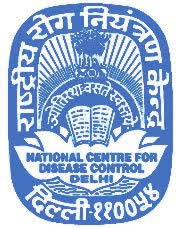
The National Centre for Disease Control (NCDC) recently issued several guidelines to combat illnesses arising out of water contamination.
- National Centre for Disease Control (NCDC) is an institute under the Indian Directorate General of Health Services, Ministry of Health and Family Welfare.
- The institute was established to function as a national centre of excellence for control of communicable diseases.
- The Director, an officer of the Public Health sub-cadre of Central Health Service, is the administrative and technical head of the Institute.
- Headquarters: New Delhi.
- Besides the headquarters in Delhi, NCDC has 8 branches located at Alwar (Rajasthan), Bengaluru (Karnataka), Kozhikode (Kerala), Coonoor (Tamil Nadu), Jagdalpur (Chhattisgarh), Patna (Bihar), Rajahmundry (Andhra Pradesh), and Varanasi (Uttar Pradesh).
- NCDC, formerly the National Institute of Communicable Diseases (NICD), had its origin as the Central Malaria Bureau, established at Kasauli (Himachal Pradesh) in 1909, and following expansion, was renamed in 1927 as the Malaria Survey of India.
- The organization was shifted to Delhi in 1938 and called as the Malaria Institute of India (MII).
- In the year 2009, NICD transformed into the National Centre for Disease Control (NCDC) with a larger mandate of controlling emerging and re-emerging diseases.
- Functions:
- It functions as the nodal agency in the country for disease surveillance facilitating prevention and control of communicable diseases.
- In coordination with the State Governments, NCDC has the capacity and capability for disease surveillance, outbreak investigation, and rapid response to contain and combat outbreaks.
- It also deals with Anti-Microbial Resistance (AMR), an emerging area of concern with far-reaching consequences.
- It also provides referral diagnostic support, capacity building, and technical support to States/UTs in the country.
- The mandate of the Institute broadly covers three areas viz. services, trained health manpower development, and research.
Muthuvan Tribe : Protest

A rare convention of the Muthuvan community has taken on a novel mission to protect their language and culture, organising a three-day special conference as part of the International Day of the World’s Indigenous Peoples.
- The Muthuvans, or Mudugars, live on the border hill forests of Kerala and Tamil Nadu.
- There are two different groups among the Muthuvan, and they speak slightly two different dialects. Hence, they call each other Malayalam Muthuvan and Pandi Muthuvan.
- They are known for coexisting with the wildlife with their traditional knowledge and understanding of hills.
- They have expertise in traditional medicines which are very effective and these medicines and the medicine men are confidentially preserved and passed on to the generations.
- The Muthuvan have six clans known as Koottams. Each koottam is again divided into sub clans.
- The functions of these divisions are mainly for marriage alliance, to keep up the social status, and to indicate descent and ancestry.
- The Muthuvan adhere to community endogamy and clan exogamy.
- These tribal people follow a unique system of governance called the ‘Kani System’.
- Under this system, each village is headed by a ‘Kani’, who is responsible for the administration of the village.
- They have various punishment methods for breaking their traditions and moral standards.
- They are animists and spirit worshippers and also worship the forest gods.
- They believe that the spirits of their ancestors are to be the first migrants to the hill forests.
- Virippukrishi (a form of shifting cultivation) is their traditional means of livelihood, and they cultivate a wide variety of food grains that are used only for consumption.
- Ragi (Little Millet), Maize (Sorghum), Thina (Italian Millet), Varagu, Chama Rice, Tomato, Carrot, Sweet Potato, Potato, Cheeni Vala, Toppi, Mocha, etc., are principal food crops cultivated by the Muthuvan community.
Biligiri Rangaswamy Temple Tiger Reserve:
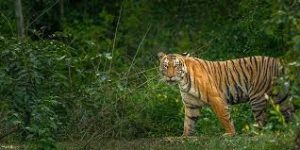
Two prominent religious institutions and two businessmen are among those served eviction notices in the Biligiri Ranganatha Temple (BRT) Tiger Reserve recently.
- It is located in the BR Hills (Biligirirangana Hills) in Chamarajanagar District of Karnataka.
- This unique Bio-geographical habitat is in the middle of the bridge between Western and Eastern ghats
- It was declared a Tiger Reserve in 2011.
- It is spread over an area of 574.82 sq.km. and lies at an elevation of 5,091 feet above sea level.
- The reserve gets its name from Biligiri, meaning “white rocky cliff,” which is home to the ancient Rangaswamy Temple dedicated to Lord Vishnu.
- It is also believed that the hill range gets its name due to white mist and silvery clouds which cover these lofty hills for a greater part of the year.
- There is a tribal community living within the tiger reserve known as the Soliga tribe.
- Soligas was the first tribal community living inside a tiger reserve and getting their forest rights recognised by a court in a judgment in 2011.
- It is covered with a variety of species of plant life, including scrub, dry deciduous, moist deciduous, shola forests, and montane grasslands.
- The major species include Anogeissus latifolia, Dalbergia paniculata, Grewia teliaefolia, Terminalia alata, Terminalia bellirica, Terminalia paniculata, etc.
- Animals including tiger, elephant, leopard, wild dog, bison, sambar, spotted deer, barking deer, four-horned antelope, sloth bear, wild boar, common langur, bonnet macaque, varieties of reptiles, birds, etc., are found in the Tiger Reserve.
Kasargodia sheebae and Pilarta vaman:
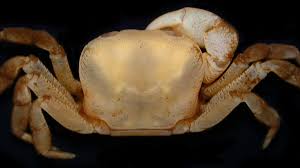
Researchers have led to the discovery of a new genus and two new species of freshwater crabs named Kasargodia sheebae and Pilarta vaman from Western Ghats regions in Kerala.
- Kasargodia sheebae and Pilarta vaman are two new species of freshwater crabs.
- They are discovered in the Western Ghats regions in Kerala.
- They belong to the freshwater crab family Gecarcinucidae.
- In the case of Kasargodia sheebae, the name of the new genus, Kasargodia, is derived from the northernmost Kerala district.
- Kasargodia sheebae is distinguished by a brownish-orange carapace with numerous black spots.
- The limbs bearing the claws are orange with black spots.
- The other new species, Pilarta vaman, is named after Vaman, one of the avatars of Vishnu in Hindu mythology.
- The name alludes to the small size of this crab.
- The carapace of this species is more quadrate.
Biosafety Levels:

Nehru Zoological Park, Hyderabad, will soon establish a Biosafety Level-3 (BSL-3) laboratory, the first of its kind in southern India, enabling rapid diagnosis, post-mortem analysis and research on zoonotic diseases.
- Biosafety levels (BSL), also known as biological safety levels or biohazard levels, define the necessary containment precautions for handling infectious agents in laboratory settings.
- They’re a mandatory requirement in any biological research facility.
- Biosafety levels contribute to the isolation of dangerous organisms and lethal agents.
- The levels of containment range from the lowest biosafety level 1 (BSL-1), to the highest at level 4 (BSL-4).
- Each BSL lab level builds upon the previous level—thereby creating layer upon layer of constraints and barriers.
- These lab levels are determined by the following:
- Risks related to containment
- Severity of infection
- Transmissibility
- Nature of the work conducted
- Origin of the microbe
- Agent in question
- Route of exposure
- BSL-1: It applies to laboratory settings in which personnel work with low-risk microbes that pose little to no threat of infection in healthy adults. Because of this, BSL-1 labs typically do not need to be isolated from surrounding facilities.
- BSL-2: It covers all laboratories that work with agents associated with human diseases — that is, pathogenic or infectious organisms — that pose a moderate health hazard if inhaled, ingested, or exposed to the skin.
- BSL-3: BSL-3 laboratory typically conducts research into or work on microbes that are either indigenous or exotic and can cause serious or potentially lethal disease through inhalation.
- BSL-4: BSL-4 labs are rare. As the highest level of biological safety, BSL-4 labs work with highly dangerous and exotic microbes. Infections caused by these types of microbes are often fatal and come without treatment or vaccines.
Blue Pinkgill Mushroom:
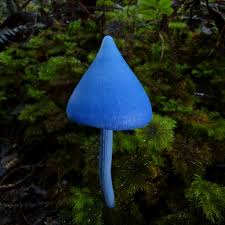
A burst of rare and colourful Blue Pinkgill fungi has been documented in the Kagaznagar forest division of the Komaram Bheem Asifabad district, of Telangana.
- Blue Pinkgill Mushroom is referred as “sky-blue mushroom,” (scientific name: Entoloma hochstetteri) this genus of mushrooms has pink to purplish hues in their gills.
- It is a species native to New Zealand and famously featured on the country’s $50 note.
- It is a vivid blue mushroom, its colour derived from rare azulene pigments.
- Some are small, with a distinctive all-blue colour and slightly reddish-tinted gills from spores, thanks to azulene pigments.
- They have caps that can be flat or funnel-shaped, pink or white gills and stems that may be centrally or laterally attached.
- The spore print is typically pink to salmon-coloured, which helps in identification.
- It is common in forests across New Zealand, where it grows in the ground between litter in the broadleaf forest.
- The Blue Pinkgill mushroom appears during the monsoon when the forest cover reaches saturation due to abundant rainfall, which creates perfect soil conditions for mushrooms to grow and thrive.
UN Conference on Landlocked Developing Countries:

The third United Nations Conference on Landlocked Developing Countries (LLDC3) opened in Awaza, Turkmenistan.
- The LLDC3 conference, held once every ten years, brings global attention to the 32 landlocked developing countries, which collectively house over 600 million people.
- The primary objective of LLDC3 is to facilitate coordinated international efforts to bridge these development gaps.
- The conference will explore actionable solutions through partnerships, smarter investment frameworks, and the development of efficient, flexible transport corridors that enhance the movement of goods and services across regions.
- Due to lack of direct access to seaports, landlocked countries face disproportionate barriers to trade, economic diversification, and infrastructure development.
- This year’s conference, themed “Driving Progress through Partnerships,” serves as a crucial platform to address structural challenges, mobilize investment, and implement the newly adopted Awaza Programme of Action (2024–2034).
- A central focus of LLDC3 is the implementation of the Awaza Programme of Action (APoA) for the Decade 2024–2034.
- The APoA was adopted by consensus at the UN General Assembly on 24 December 2024 and offers a comprehensive framework to tackle persistent development challenges faced by LLDCs.
Colorado River : Diminishes

The Colorado River, a vital water source for millions, faces a crisis as its flow diminishes, prompting states to vie for future water rights.
- Colorado River is a major river of North America.
- It rises in the Rocky Mountains of Colorado, U.S.
- It flows generally west and south for 1,450 miles (2,330 kilometres) into the Gulf of California in northwestern Mexico.
- It flows through seven U.S. states and two Mexican states, providing water to over 40 million people.
- The river drains a vast arid and semiarid sector of the North American continent, and because of its intensive development it is often referred to as the “Lifeline of the Southwest.”
- It forms several major reservoirs, including Lake Mead and Lake Powell.
- Colorado forms an international boundary between Arizona (US) and Mexico for about 29 kilometers.
- The Colorado River has several tributaries, including Green, Gunnison, San Juan, Dolores, Little Colorado, Gila, and Virgin Rivers.
- One of the Colorado River’s most famous features is the Grand Canyon, which it carved over millions of years. This breathtaking landscape is a UNESCO World Heritage Site and a major tourist attraction.
- The river also flows through Canyonlands National Park and Horseshoe Bend in Arizona.
Barda Wildlife Sanctuary : Celebrated World Lion Day 2025

The Ministry of Environment, Forest and Climate Change in collaboration with the Forest and Environment Department, Government of Gujarat celebrated World Lion Day – 2025 at Barda Wildlife Sanctuary, Devbhumi Dwarka district, Gujarat.
- Barda Wildlife Sanctuary is located in the state of Gujarat.
- There are two waterways, the Bileshvary River and the Joghri River, and two dams, Khambala and Fodara.
- Ethnic races such as Maldharis, Bharvads, Rabaris, and Gadhvis live in this region.
- To develop Barda as the second home for the Asiatic lion, the state government implemented the ‘Gir-Barda Project’ in 1979.
- The sanctuary is a significant biodiversity hotspot and a key area for the conservation of Asiatic Lions.
- It is characteristically abundant in floral diversity, which consists of a good number of medicinal plants.
- The sanctuary boasts about 650 plant species, which comprise Rayan, Babul, Ber, Jamun, Amli, Gorad, Bamboo, Dhav, Dhudhlo, et
- Leopard, Hyena, Wild boar, wolf, Jackal, blue bull, rare and endangered spotted eagle, crested hawk eagle, etc.
- Asiatic Lion is also known as the Persian Lion or Indian Lion, belongs to the subspecies Panthera leo persica.
- It is found exclusively in India, specifically in the Gir National Park and Wildlife Sanctuary in Gujarat.
Parthenium:
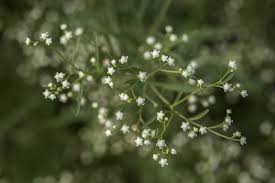
As a part of a three-day campaign of Parthenium Free Pobitora, about 5.2 hectares of the Pobitora Wildlife Sanctuary in Assam‘s Morigaon district were cleared of Parthenium, or Congress grass, an invasive weed, by the forest staff recently.
- Parthenium hysterophorus L., commonly known as carrot weed, white top, or congress grass in India, is an herbaceous, erect, and annual plant belonging to the family Asteracae (compositae).
- It is a poisonous, pernicious, problematic, allergic, and aggressive weed posing a serious threat to human beings and livestock.
- In India, this weed has been considered as one of the greatest sources of dermatitis, asthma, nasal-dermal and nasal-bronchial types of diseases.
- Besides ill effects, it also causes several other problems, like blockage of common pathways, and reduces the aesthetic values of parks, gardens, and residential colonies.
- It is a nuisance on roadsides and railway tracks, vacant lands, wastelands, industrial areas, and on the sides of open drainage systems and irrigation canals, besides invading agricultural crops, orchards, and forest areas.
- It is most popularly known as gajar ghas due to its appearance like a carrot plant.
- The origin of parthenium is considered to be from Mexico, America, Trinidad, and Argentina.
- After the noticeable occurrence of parthenium in Pune (Maharashtra) in 1955, it has spread like a wildfire throughout India.
- At present parthenium has invaded about 35 million hectares of land in India.
- It mainly spreads through seeds.
- A single plant can produce about 5000 – 25000 seeds.
- The seeds are very small in size and light in weight.
- Pobitora Wildlife Sanctuary is located in the eastern region of Guwahati, Assam.
- It was established in 1998 and covers an area of 48.81 square kilometres.
- The Sanctuary consists of the Rajamayong Reserve Forest and Pobitora Reserve Forest.
India’s Annu Rani Wins Gold at International Wiesław Maniak Memorial:
India’s Annu Rani, the reigning Asian Games champion, struck gold in the women’s javelin throw at the International Wiesław Maniak Memorial in Poland, delivering a season-best performance of 62.59 metres. The 32-year-old’s commanding throws secured her the top spot ahead of competitors from Turkey and Australia.
Highlights:
- Gold: Annu Rani (India) – 62.59m (Season Best)
- Silver: Eda Tugsuz (Turkey) – 58.36m
- Bronze: Lianna Davidson (Australia) – 58.24m
Indian Railways Launches 20% Return Fare:
To ease festival rush and ensure better utilization of trains during peak travel months, the Indian Railways has launched an experimental Round Trip Package scheme offering a 20% rebate on the base fare of the return journey. This initiative aims to spread out passenger traffic, reduce last-minute booking pressure, and make travel more convenient during the festive season. Bookings for the scheme will open on August 14, 2025, for onward journeys between October 13–26, 2025, with return journeys scheduled between November 17–December 1, 2025.
INS Tamal concludes a three-day port call at Casablanca, Morocco:
The Indian Navy’s newest stealth frigate, INS Tamal, successfully completed a three-day port call at Casablanca, Morocco from 6–9 August 2025 as part of her return journey to India. Commissioned in Russia on 1 July 2025, INS Tamal is sailing home via several European and Asian ports, showcasing India’s maritime diplomacy and deepening defence partnerships. This visit marked the third Indian Naval Ship to dock at Casablanca in the last two years, reflecting the growing strategic importance of India–Morocco defence cooperation.
India’s defence exports hit ₹23,000 crore in 2024–25:
India’s defence exports reached an impressive ₹23,000 crore in 2024–25, and this figure is set to double within the next two to three years, according to Dr. Sameer Kamat, Secretary of the Department of Defence Research and Development (DDR&D) and Chairman of the Governing Council of the Defence Institute of Advanced Technology (DIAT). Dr. Kamat highlighted India’s growing role as a global supplier of advanced defence technology, driven by indigenous innovation and robust demand from international partners.
World Sanskrit Day 2025:
World Sanskrit Day, or Vishva-Samskrita-Dinam, is observed every year to celebrate one of the world’s oldest and most influential languages—Sanskrit. In 2025, the day falls on Shravan Purnima (9th August), coinciding with festivals like Raksha Bandhan and Upakarma in different regions of India. The celebration aims to promote Sanskrit learning, preserve its rich cultural legacy, and highlight its continuing relevance despite modern challenges. Sanskrit, often referred to as the language of the gods (Devabhasha), has been the medium for India’s ancient scriptures, philosophies, scientific treatises, and literature for thousands of years. Its origins can be traced back to the Vedic period (around 1500 BCE), making it a cornerstone of Indian civilisation. Recognising the need to revive interest in this treasure of heritage, the Government of India initiated World Sanskrit Day celebrations in 1969.
India’s Longest-Route Vande Bharat Express Launched on This Corridor:
Prime Minister Narendra Modi today inaugurated the Nagpur–Pune Vande Bharat Express, the longest-route Vande Bharat train in India, along with two other new train services. The flag-off ceremony was conducted through video conferencing, with Union Minister Nitin Gadkari and Maharashtra Chief Minister Devendra Fadnavis present at the launch event at Nagpur Central Railway Station. There is a high volume of travellers from Vidarbha to Pune, but many currently rely on private vehicles and expensive alternatives due to the lack of a direct, comfortable, and time-efficient train service. The Maharashtra Government had requested the Railway Ministry to address this gap, leading to the launch of the Nagpur–Pune Vande Bharat Express.




